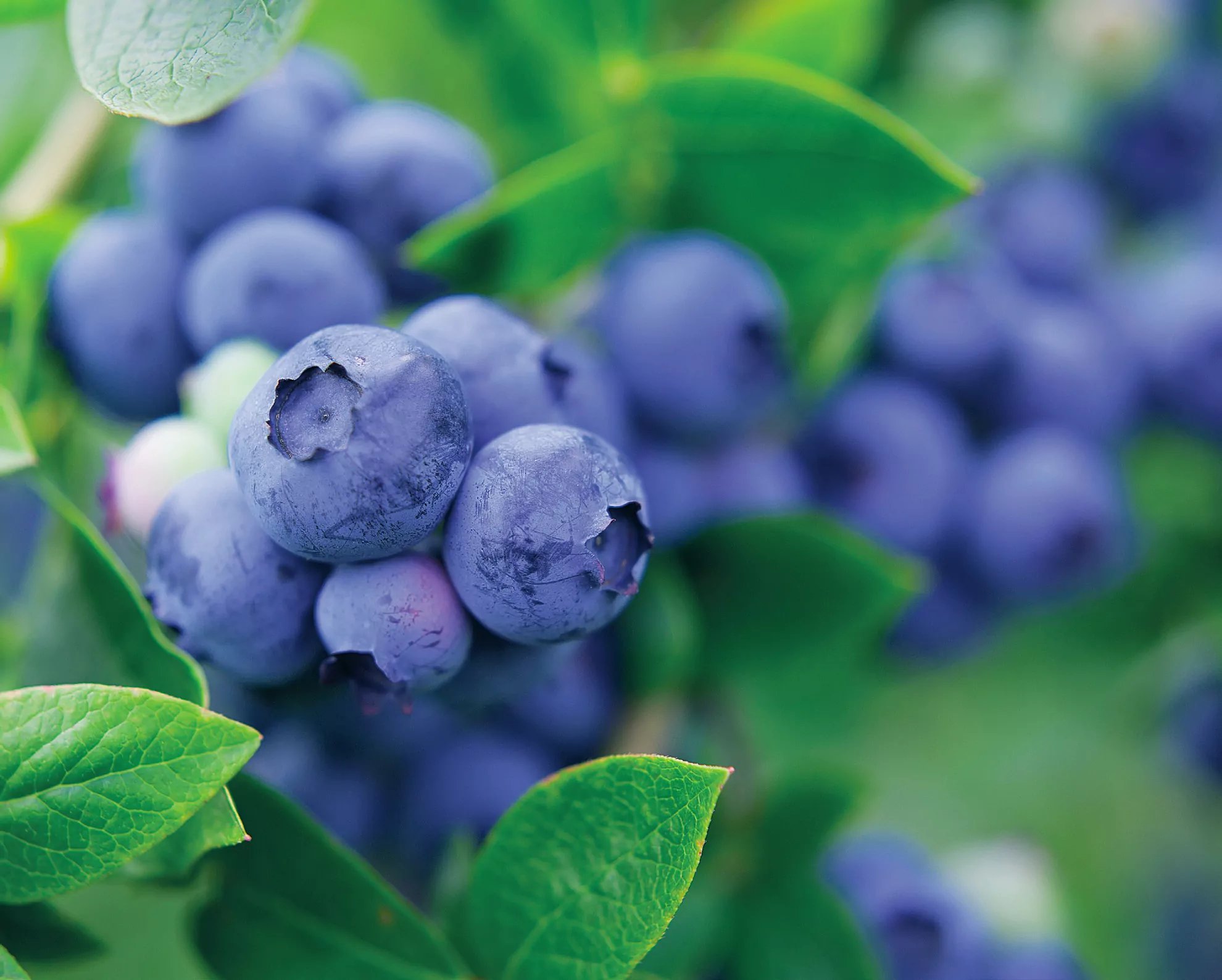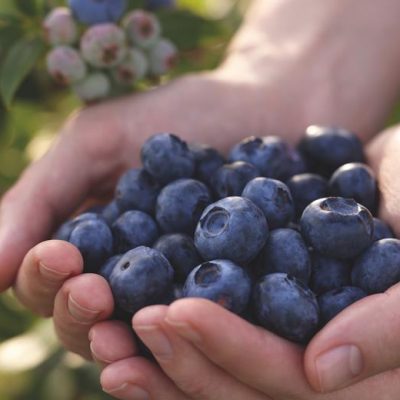Interview with Andrés Armstrong, Executive Director of the Chilean Blueberry Committee
- . April 2025
“We are starting to see volumes that correspond with the varietal renewal that is spoken about so much worldwide”

In an increasingly competitive global landscape, where success depends not just on producing more, but on doing it better, Chile closed its 2024-25 blueberry season with a clear sign of resilience: over 91,000 tons of fresh blueberries exported – a 5% increase from the previous season.
More than just a number, this growth reflects an industry committed to quality, varietal renewal, and delivering fruit on time. Andrés Armstrong, Executive Director of the Chilean Blueberry Committee, shares his insights on the sector’s progress, logistical challenges, rising international competition, and how Chile is working to maintain its global leadership.
How would you assess the close of the season, especially considering the 5% increase in volume and how this relates to Chile’s competitiveness?
What stands out this past season is that the growth of new varieties was greater than in previous seasons. The varietal renewal so widely discussed around the world, and particularly in Chile, is now beginning to be reflected in volume. The most positive aspect of this season was the 5% increase, which is basically explained by a 50% growth in new varieties, which went from representing 15% of exports last season to 22%. That’s what’s remarkable and what makes the news. Because, in general, the industry is closely tied to volume, but Chile has been adapting its offering to the new competitive landscape for some time now, which means we face much more competition today than we did years ago. These volume declines we’ve experienced in fresh produce exports from Chile are due to the fact that we’re leaving out some varieties that are no longer competitive, that lack the capacity to reach markets well, and that, given the new supply, don’t have much of a chance. Therefore, we haven’t taken this downward adjustment in volumes unfavorably, because we’ve been improving our mix and our supply to the markets efficiently.
And what challenges did it leave behind?
We faced a season with significant growth for several species. Particularly cherries in Chile, which increased their exports by more than 51%, and Peruvian blueberries, which grew by nearly 40%. This significantly overloaded the logistics system and container availability and caused us problems. Added to this were the difficulties we also had with SAG (the Chilean Agriculture and Livestock Service) and the capacity to carry out all the inspections. This affected us, and some fruit was shipped a little later than it should have, because not all inspection capacity was available. And these are things we must address as an industry: from producers, exporters, the trade association, and also the public sector, so that next season we can count on better internal logistics. Because we gain nothing by having the best varieties if we aren’t able to transport them.
Chile has historically been a leader in fresh blueberry exports, but in the Southern Hemisphere, Peru has emerged strongly, and South Africa has also gained a presence in some markets, such as Europe. How is Chile positioning itself against new competitors?
It’s not just the Southern Hemisphere, because production from Mexico, Morocco, and southern China are also included – it’s not just Peru that’s emerging. Peru’s estimate for this season is 400,000 tons, more than four times Chile’s volume. There are Chilean producers operating in Peru, Mexico, and Morocco.
The thing is, when this industry didn’t have the varieties that can be produced today, there were two major supply peaks: one in the summer in the Northern Hemisphere, and another in the summer in the Southern Hemisphere, strongly led by Chile. In between, there was limited fruit availability because the varieties that today allow production in those windows didn’t exist. So, both Chile and the rest of the United States – and we could also talk about what’s happening in Europe – were expanding their production capacities toward spring and fall. And when these new varieties appear, which naturally adapt to those production spaces, they displace not only Chile but also North American producers.
So, has Chile been losing market share? Yes, because we had filled a market window that wasn’t naturally ours, since we didn’t have the technological development and varieties that exist today. So, both in Chile and in the United States, producers have a production base that comes from previous years, with older genetic materials, which they have had to renew. And we are in that process.
And how is Chile positioning itself? It does so by starting with the renewal of its production base, that is, its varieties. And we, as a trade association, have promoted those varieties that are not exported as fresh products, because they don’t arrive well and don’t compete well.
What impact could the tariff policy announced by the Trump administration have on blueberry trade and Chile’s export strategy?
The main measure – if this has an impact, and I believe it will for several reasons – is market diversification. If you look at Chilean blueberry imports last season, 43% went to the United States, but also 43% to Europe. Another 10 or 11% go to Asia. And there’s a percentage, still very small, that goes to Latin America and the Middle East. So, more than the tariffs themselves, what worries us is the global economic slowdown that this could cause.
The effect isn’t just a 10% tariff, but general economic uncertainty. It’s a different matter when the tariff isn’t 10%, but 140% – as is happening between China and the United States – how does that affect the economies of those countries? We’re already seeing signs: in the United States, for example, there are sectors that are suffering greatly, such as the agricultural sector, which has been prevented from exporting products to China and is experiencing a drop in consumption. So, the real question is what impact this will have on the economy and consumers, beyond the price a tariff on our blueberries could have.
How has Chile’s position in the Chinese market evolved, and what impact did the Maersk Santoro incident have last season?
Our position in China for blueberries has been declining for several reasons. There has been much more competition from Peruvian fruit, from Chinese fruit itself, and from Chilean cherries, which occupy a large market right at the time Chilean blueberries arrive. So, the Santoro incident didn’t have a major impact. That ship wasn’t carrying blueberries, so it didn’t affect us directly; we didn’t have to adjust to any logistical issues. I understand that, in the case of cherries, it’s obviously different. But there were difficulties with container availability, port congestion, shipping delays, heavy seas, and a series of problems, including inspections, that slowed down the export logistics process.
What message would you give to producers today, given the current situation and the main challenges the industry faces to remain competitive?
I would start by telling them that blueberries are still a fruit in the process of development, and that global per capita consumption is still low – even in the most developed markets, such as the United States. So, the opportunity exists, but it’s for fruit that arrives in optimal condition, which is what consumers are prioritizing. Fruit that doesn’t arrive in optimal condition doesn’t fetch good prices, and that’s not sustainable.
How do we do that? It lies partly in the work done in the fields. There are traditional varieties that perform well, that have been maintained, and that arrive well. There are also new varieties that open up other opportunities in terms of certain characteristics, such as size, for example. All these types of things, at the field level and with varieties, are opportunities that Chilean producers are also taking advantage of. Of course, at a different speed, because Chile’s climate is not the same as that of countries where cold requirements are lower, cycles are shorter, and turnover occurs more quickly. Chile is also doing this, but it needs more time.
Another challenge we face as an industry, stemming from producers, exporters, associations, and also authorities, is to streamline logistics so we can reach markets faster. We are looking for alternatives. There are many logistics services interested and competing with each other to deliver cherries – which have a short season – to the market in just a few weeks. Cherries alone can do that. In the case of blueberries, we can team up with other varieties to generate the necessary volumes and establish better services. This is what we are working on for the next season, along with strengthening our internal capacities to be able to inspect the fruit and ensure it ships as quickly as possible. Because the faster it arrives, the greater the chances that it will arrive in good condition and be well paid.
30.04.2025
This is an IBO Exclusive Content.







